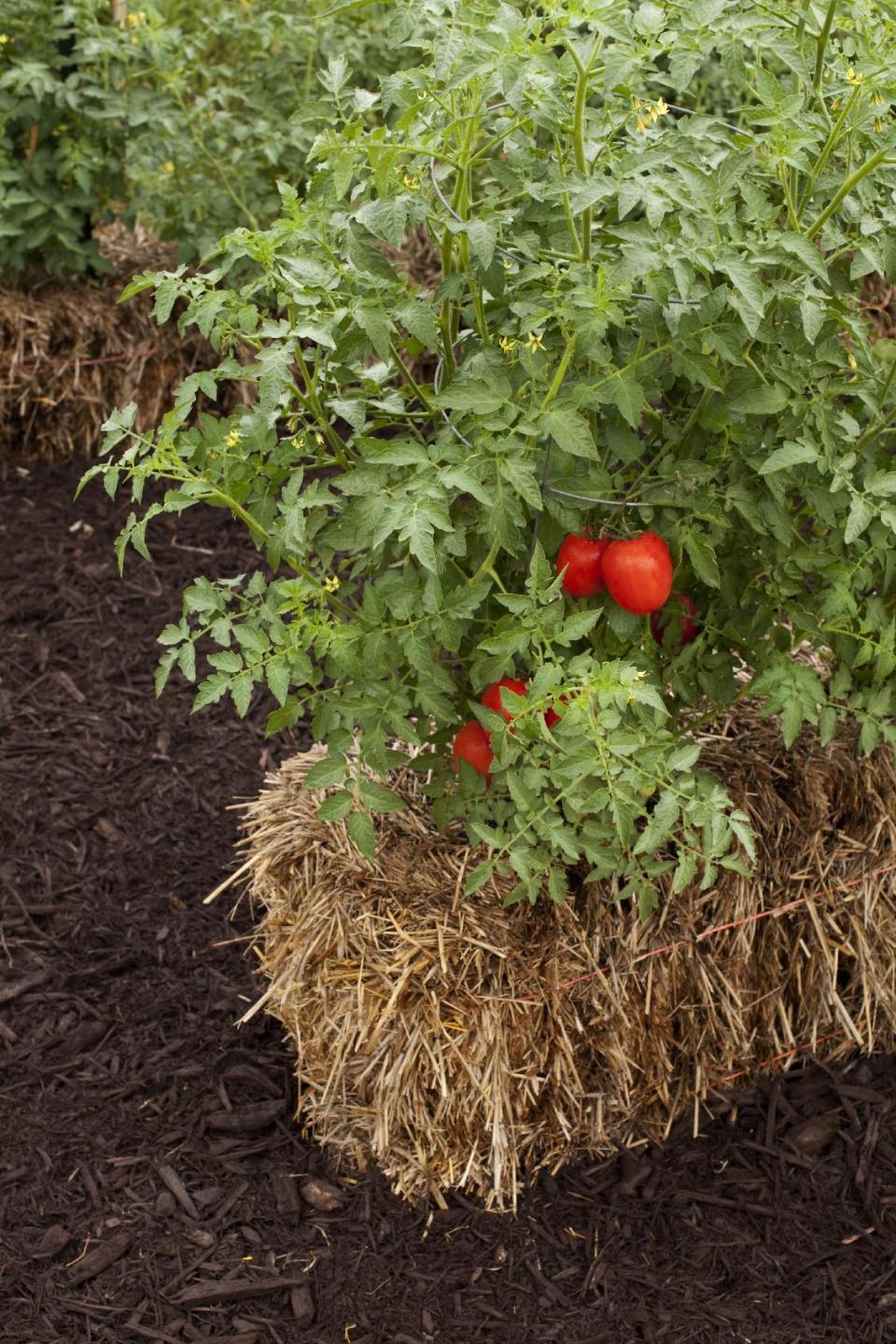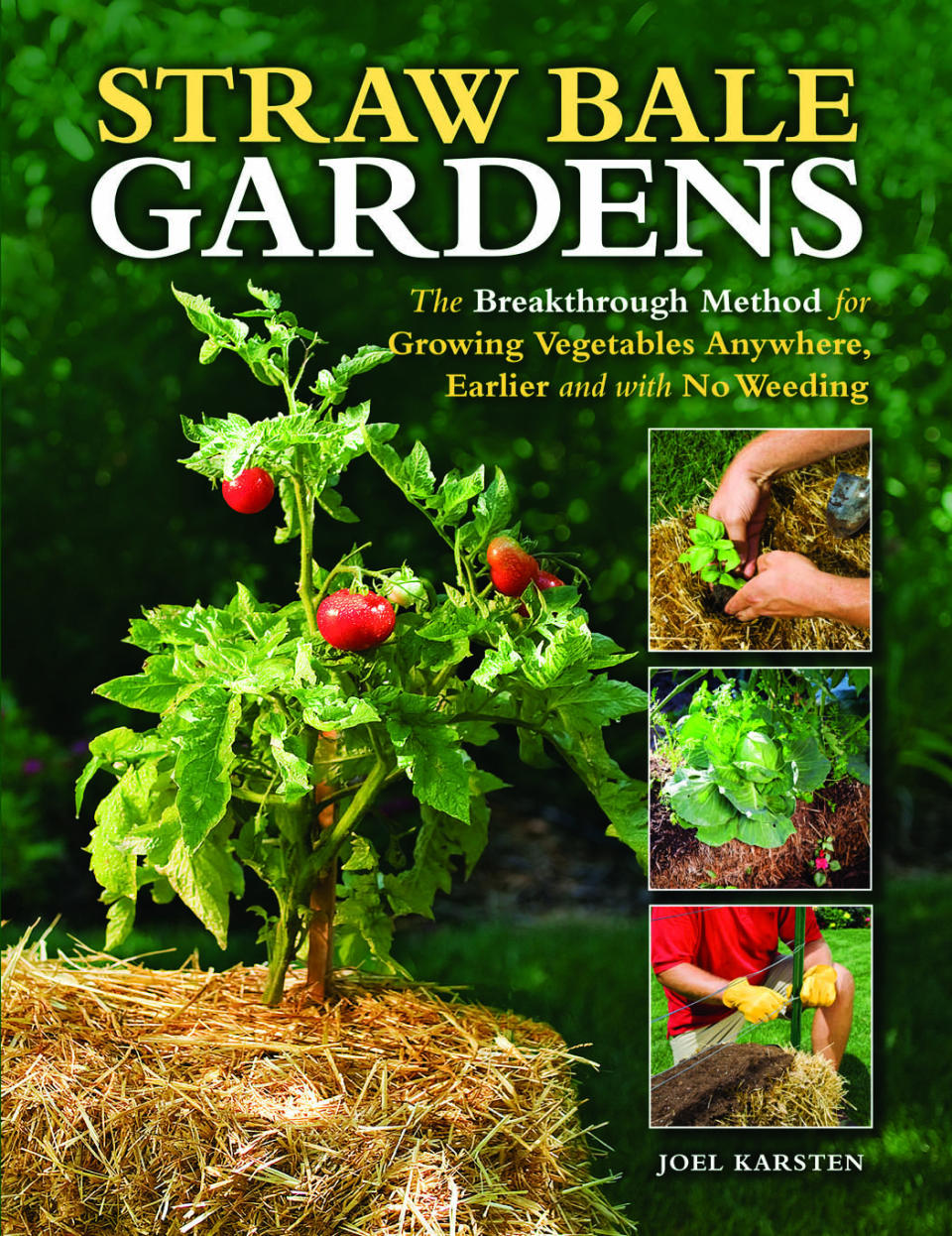Bad soil? No soil? Plant in straw bales instead
Bad soil? Not enough soil? Maybe even no soil?
Skip the ground and try planting fruits and vegetables in straw bales instead, suggests Joel Karsten, author of "Straw Bale Gardens" (Cool Springs Press, 2013) and guru of one of this year's gardening trends.
The idea behind straw-bale gardening is simple.
"It's basically a different type of container garden," says Karsten, of Roseville, Minn.
Only the vessel is a bale of straw and the medium, a nutrient-rich compost created by the straw and a bit of fertilizer, is weed-free.
That's right. No weeds.
Perhaps that's what's drawn tens of thousands of people to Karsten's Facebook page on straw-bale gardening.
Marketing executive Patricia Baker tried the technique as a way to avoid the weeds that abound in the heavy, clay soil at her home in the Berkshire mountains of Massachusetts.
"I found that some plants did better than others — basically the ones that like the heat, like peppers," says Baker, 51, who also had success growing tomatoes.
"Overall, there are very few weeds to contend with and you don't have a backache at the end of your gardening day. Also, after you harvest, you can use the leftover straw for mulch."
Straw-bale gardening lengthens the growing season in colder climates because the straw releases heat as it decomposes.
In Jamestown, R.I., gardener and freelance writer Roger Marshall, 65, planted tomatoes in April and expected to begin picking his Earl Greys and beefsteaks in mid-July — about a month ahead of schedule.
"Right now the plants are lush and about twice the size of the control tomatoes I planted directly in front of the bales," he says.
For Karsten, a 43-year-old graduate of the University of Minnesota's horticulture program, the idea sprang from his days on the family farm. As a child, he was intrigued by the thistles and other plants he'd see sprouting from wet bales of straw, and he wondered how they grew. After college, he began experimenting with straw bales as a growing medium at his suburban St. Paul home, which sat at the edge of a swamp on top of construction fill.
"I couldn't grow vegetables in what I had, so I thought, 'What if I use straw bales like I saw up against the side of the barn?'" says Karsten.
After some trial and error, he figured out how to "condition" the bale for planting.
Karsten offers these tips to start your own straw-bale garden (and, no, it's not too late this season):
WHAT YOU'LL NEED
First, be sure to buy straw bales, not hay. Hay bales contain seeds, which will grow into weeds, and isn't that one big reason you're trying straw-bale gardening in the first place?
Hay bales are typically green while straw bales are a golden yellow. You can find them at many nurseries and garden stores, and Karsten has also started a website (www.strawbalemarket.com ) to help people find bales for sale.
About 15 bales will provide the same plant production as a 20-by-20-foot traditional soil garden.
Karsten suggests using about five bales per person you want to feed.
You'll also need a soaker hose and 2 1-2 cups per bale of lawn fertilizer that's at least 20 percent nitrogen, with no added herbicides. If you're going the organic route, Karsten recommends using three pounds of blood meal per bale.
CONDITIONING THE BALE
Before planting, you need to "condition" the straw bales for 10 to 12 days.
First, lay them out as you want them in the garden, placing them end to end in a row and turning them up on their sides.
Every other day, sprinkle some of whatever fertilizer you're using over the bale and "wash" it into the bale with a spray hose, watering long enough that water comes out from under the bale, Karsten says. On days you don't fertilize the bale, keep watering it once a day until saturation.
On the 12th day, you should be ready to plant on the tops and even the sides of the bales, spacing the plants as you normally would.
If planting seeds, lay down 1 to 2 inches of potting soil on top of the bales first.
MAINTENANCE
There's not a lot of maintenance required, but Karsten does recommend watering the bales every day when it's hot with a soaker hose or a dripper system with one hose down into the middle of the bale. Every two to three days is fine in the spring and fall.
Trellises are needed for taller or climbing plants like tomatoes and beans, and Karsten recommends covering the bales with a tarp if temperatures are going to dip to 30 degrees or lower at night.
Many times, you can use a bale two years in a row, but after that, it's time to pile them together for use as compost next spring.
____
Online:
Joel Karsten: http://strawbalegardens.com
http://strawbalemarket.com
https://www.facebook.com/learntogrowastrawbalegarden
Patricia Baker: www.newamericancastle.org






